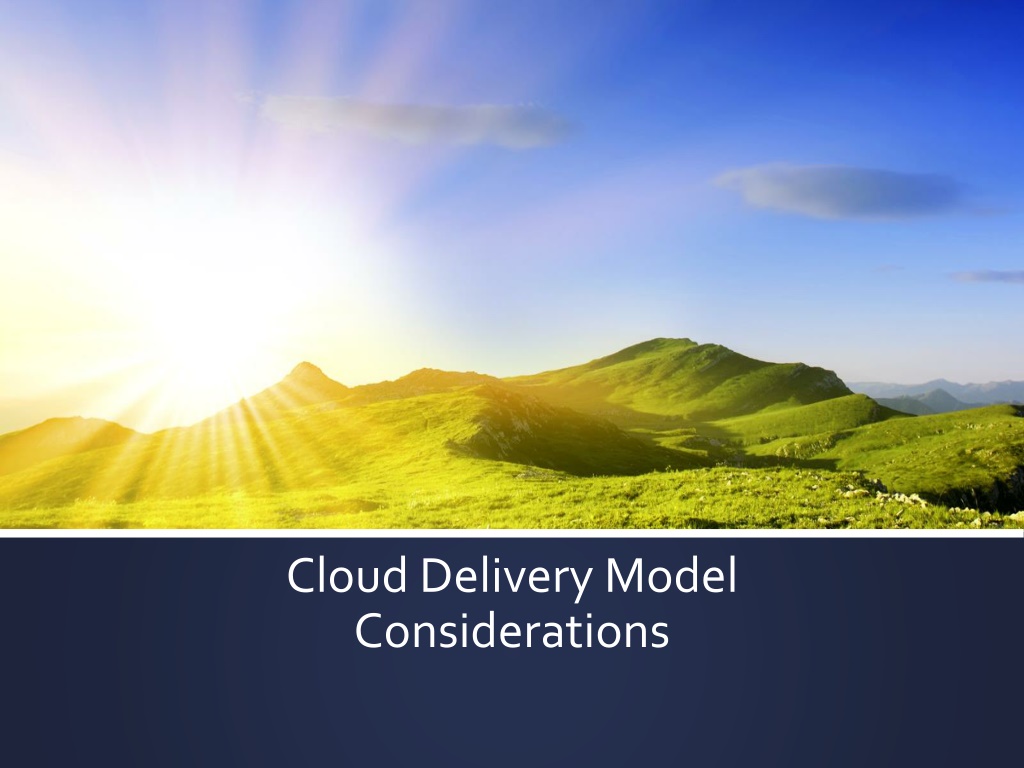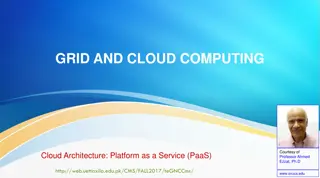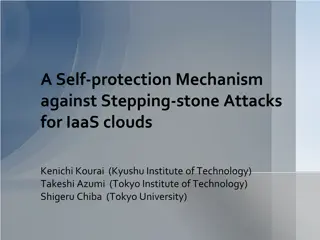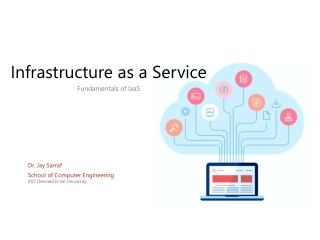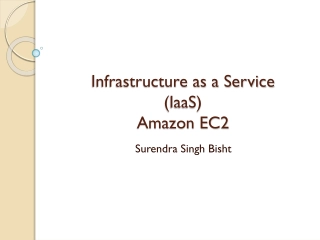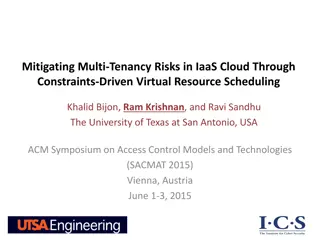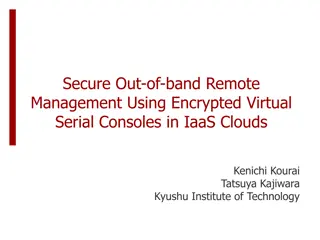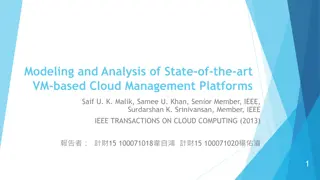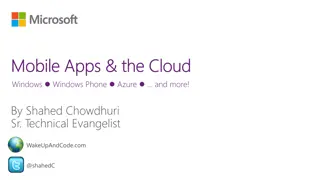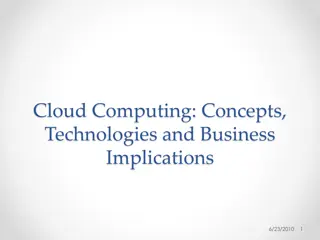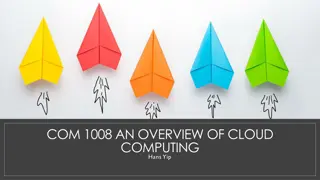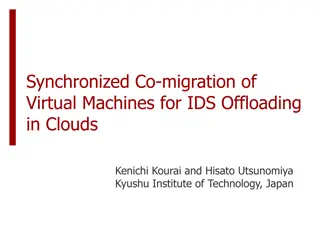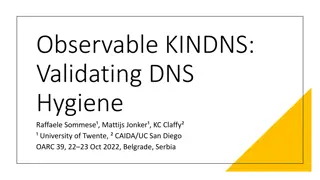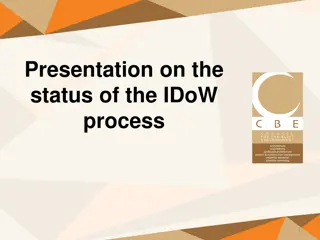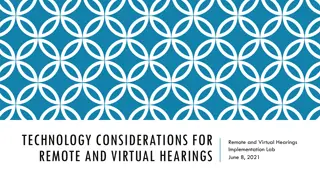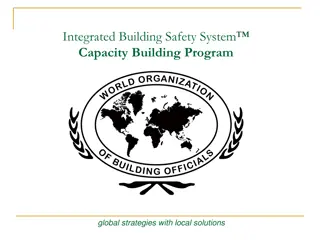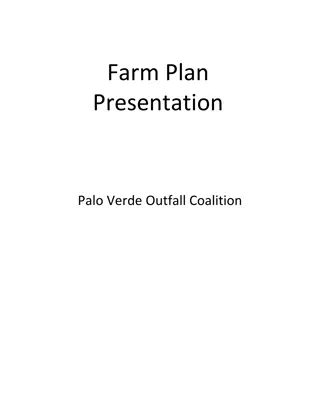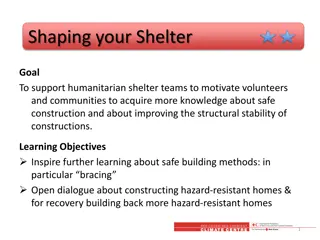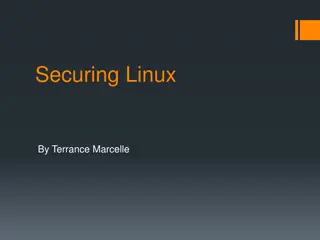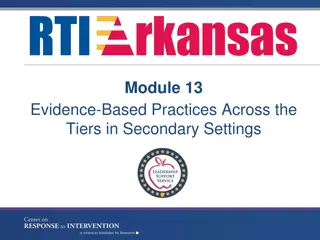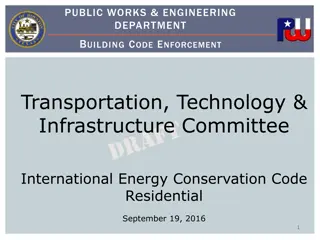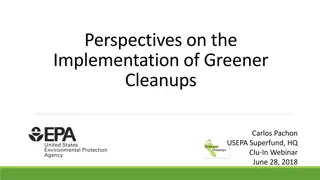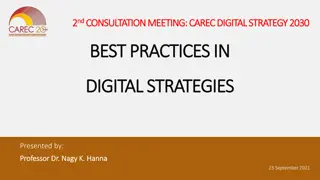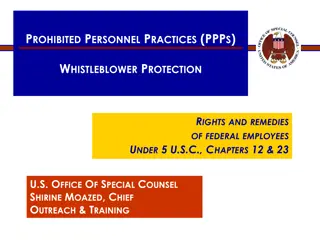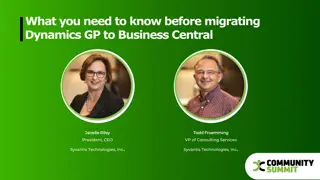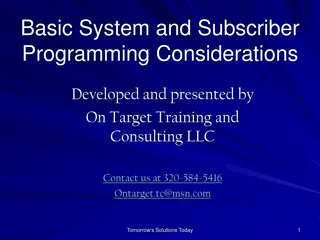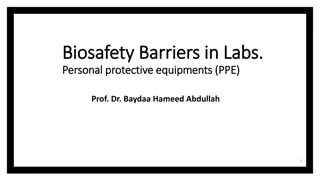Building IaaS Environment: Key Considerations and Best Practices
Explore essential aspects of building an Infrastructure as a Service (IaaS) environment, including cloud delivery models, optimizing IaaS, data center strategies, scalability, reliability, and monitoring. Learn about crucial components like virtual servers, cloud storage devices, provisioning mechanisms, high availability configurations, and resource scaling methods. Enhance your understanding of IaaS architecture to create a robust and efficient cloud infrastructure.
Download Presentation

Please find below an Image/Link to download the presentation.
The content on the website is provided AS IS for your information and personal use only. It may not be sold, licensed, or shared on other websites without obtaining consent from the author. Download presentation by click this link. If you encounter any issues during the download, it is possible that the publisher has removed the file from their server.
E N D
Presentation Transcript
Cloud Delivery Model Considerations
Cloud Delivery Models: Cloud Provider Perspective
Optimizing IaaS Equipping PaaS Building IaaS
Building IaaS Environment Two fundamental IT resources virtual servers and cloud storage device mechanisms. Properties: OS RAM capacity CPU capacity Virtualized storage capacity Provisioning with increments of 1GB for ease of management. Direct access to physical IT resources (bare-metal architecture comes into play). Snapshots record current state for backup and recover, horizontal and vertical scaling purposes.
Building IaaS Environment (Data Center) Cloud providers can offer IaaS-based IT resources from multiple geographically diverse data centers. Multiple data centers can be linked together for increased resiliency. Each data center is placed in a different location to lower the chances of a single failure. Connected through high-speed communications networks with low latency, data centers can perform load balancing, IT resource backup and replication, and increase storage capacity, while improving availability and reliability. Data centers that are deployed in different countries make access to IT resources more convenient for cloud consumers that are constricted by legal and regulatory requirements. Each cloud consumer is segregated (separated / isolated) into a tenant environment.
Building IaaS Environment (Scalability and Reliability) When provisioned, virtual servers may be scaled up (when?) or scaled out (how?). This provisioning is done via VIM. In case of horizontal scaling, load balancer mechanism can be used to ? Scalability procedures: Manual interact with usage and administration program to explicitly request IT resource scaling. Automatic automated scaling listener does the job. Replicated IT resources can be arranged in high-availability configuration that forms a failover system. HA may be achieved via a clustering mechanism. Multipath resource access architecture. Resource reservation architecture.
Building IaaS Environment (Monitoring) Virtual Server Lifecycles Recording and tracking uptime periods and the allocation of IT resources, for pay-per-use monitors and time-based billing purposes. Data Storage Tracking and assigning the allocation of storage capacity to cloud storage devices on virtual servers, for pay-per- use monitors that record storage usage for billing purposes. Network Traffic For pay-per-use monitors that measure inbound and outbound network usage and SLA monitors that track QoS metrics, such as response times and network losses. Failure Conditions For SLA monitors that track IT resource and QoS metrics to provide warning in times of failure. Event Triggers For audit monitors that appraise and evaluate the regulatory compliance of select IT resources.
Building IaaS Environment (Security) Encryption, hashing, digital signature, and PKI mechanisms for overall protection of data transmission IAM and SSO mechanisms for accessing services and interfaces in security systems that rely on user identification, authentication, and authorization capabilities Cloud-based security groups for isolating virtual environments through hypervisors and network segments via network management software Hardened virtual server images for internal and externally available virtual server environments Various cloud usage monitors to track provisioned virtual IT resources to detect abnormal usage patterns.
Equipping PaaS Environments PaaS environments outfitted with a selection of application development and deployment platforms. A separate ready-made environment is usually created for each individual platform (matched SDK and IDE). Typically, security restrictions are simulated in the dev. environment. Customized virtual server images with ready-made environments can be created and managed by cloud consumers. Cloud providers rely on a variation of the rapid provisioning architecture known as platform provisioning .
Equipping PaaS Environments (Scalability and Reliability) Scalability requirements are addressed via dynamic scalability and workload distribution architectures. Resource pooling architecture may also be utilized. Network traffic and server-side usage can be evaluated to determine how to scale an overloaded application as per parameters and cost limitations provided by the cloud consumer. Reliability a standard failover system + non-disruptive service relocation architecture. Resource reservation architecture can be deployed to offer an exclusive access to PaaS-based IT resources.
Equipping PaaS Environments (Monitoring) Ready-Made Environment Instances The applications of these instances are recorded by pay-per-use monitors for the calculation of time-based usage fees. Data Persistence This statistic is provided by pay-per-use monitors that record the number of objects, individual occupied storage sizes, and database transactions per billing period. Network Usage Inbound and outbound network usage is tracked for pay-per-use monitors and SLA monitors that track network-related QoS metrics. Failure Conditions SLA monitors that track the QoS metrics of IT resources need to capture failure statistics. Event Triggers This metric is primarily used by audit monitors that need to respond to certain types of events.
Equipping PaaS Environments (Security) No need to introduce the need for new cloud security mechanisms for PaaS environments. Why?
Optimizing SaaS Environment SaaS-based environments multitenant environments. SaaS IT resource segregation (isolation) does not occur at the infrastructure level in SaaS as it does it IaaS and PaaS. SaaS relies heavily on dynamic scalability and workload distribution architectures, and also non-disruptive service relocation architecture (ensure a failover system). Unlike IaaS and PaaS, SaaS deployment comes with unique architectural, functional and runtime requirements. These requirements are specific to the nature of business logic.
Recognized Online SaaS Offerings Collaborative authoring and information-sharing (Wikipedia, Blogger) Collaborative management (Zimbra, Google Apps) Conferencing services for instant messaging, audio/video communications (Skype, Google Talk) Enterprise management systems (ERP, CRM, CM) File-sharing and content distribution (YouTube, Dropbox) Industry-specific software (engineering, bioinformatics) Messaging systems (e-mail, voicemail) Mobile application marketplaces (Android Play Store, Apple App Store) Office productivity software suites (Microsoft Office, Adobe Creative Cloud) Search engines (Google, Yahoo) Social networking media (Twitter, LinkedIn)
Optimizing SaaS Environments (2) Each of these SaaS implementation mediums provide Web-based APIs for interfacing by cloud consumers. Examples of online SaaS-based cloud services with Web-based APIs include: electronic payment services (PayPal) mapping and routing services (Google Maps) publishing tools (WordPress) SaaS implementation may need to incorporate a number of architectural models.
Optimizing SaaS Environments (3) Service Load Balancing for workload distribution across redundant SaaS-based cloud service implementations. Dynamic Failure Detection and Recovery to establish a system that can automatically resolve some failure conditions without disruption in service to the SaaS implementation. Storage Maintenance Window to allow for planned maintenance outages that do not impact SaaS implementation availability. Elastic Resource Capacity/Elastic Network Capacity to establish inherent elasticity within the SaaS-based cloud service architecture that enables it to automatically accommodate a range of runtime scalability requirements. Cloud Balancing to instill broad resiliency within the SaaS implementation, which can be especially important for cloud services subjected to extreme concurrent usage volumes.
Optimizing SaaS Environments (Monitoring) Tenant Subscription Period This metric is used by pay- per-use monitors to record and track application usage for time-based billing. This type of monitoring usually incorporates application licensing and regular assessments of leasing periods that extend beyond the hourly periods of IaaS and PaaS environments. Application Usage This metric, based on user or security groups, is used with pay-per-use monitors to record and track application usage for billing purposes. Tenant Application Functional Module This metric is used by pay-per-use monitors for function-based billing. Cloud services can have different functionality tiers according to whether the cloud consumer is free-tier or a paid subscriber.
Optimizing SaaS Environments (Security) SaaS implementations generally rely on a foundation of security controls inherent to their deployment environment. Distinct business processing logic will then add layers of additional cloud security mechanisms or specialized security technologies. For example, messaging service may offer message encryption while email service does not.
Cloud Delivery Models: Cloud Consumer Perspective
Working with IaaS Working with PaaS Working with IaaS
Working with IaaS Environments Cloud consumers access VM at the OS level via remote terminal applications; Remote desktop (Windows) SSH client (MAC and Linux-based)
Working with IaaS Environments (2) Cloud storage can be attached directly to virtual servers and accessed through virtual server s functional interfaces. Cloud storage can also be attached to an IT resource that is being hosted outside the cloud (on-premise device) over WAN or VPN. Formats for cloud storage data: Network Filed Systems NFS, CIFS Storage Area Network Devices (SAN, block-based storage) Web-based Resources Object-based storage accessed via web-based interface (Amazon S3)
Working with IaaS Environments (IT Resource Provisioning Consideration) Controlling scalability features (automated scaling, load balancing). Controlling the lifecycle of virtual IT resources (shutting down, restarting, powering up of virtual devices). Controlling the virtual network environment and network access rules (firewalls, logical network perimeters). Establishing and displaying service provisioning agreements (account conditions, usage terms). Managing the attachment of cloud storage devices. Managing the pre-allocation of cloud-based IT resources (resource reservation). Managing credentials and passwords for cloud resource administrators. Managing credentials for cloud-based security groups that access virtualized IT resources through an IAM.
Working with IaaS Environments (IT Resource Provisioning Consideration) Managing security-related configurations. Managing customized virtual server image storage (importing, exporting, backup). Selecting high-availability options (failover, IT resource clustering). Selecting and monitoring SLA metrics. Selecting basic software configurations (operating system, pre- installed software for new virtual servers). Selecting IaaS resource instances from a number of available hardware-related configurations and options (processing capabilities, RAM, storage). Selecting the geographical regions in which cloud-based IT resources should be hosted. Tracking and managing costs.
Working with PaaS Environments A typical PaaS IDE can offer a wide range of tools and programming resources, such as software libraries, class libraries, frameworks, APIs, and various runtime capabilities that emulate the intended cloud-based deployment environment. These features allow developers to create, test and run application code within the cloud or on-premise. PaaS also allows for applications to use cloud storage devices as independent data storing systems for holding development- specific data (for example in a repository that is available outside of the cloud environment). Both SQL and NoSQL database structures are generally supported.
Working with PaaS Environments Establishing and displaying service provisioning agreements, such as account conditions and usage terms. Selecting software platform and development frameworks for ready-made environments. Selecting instance types, which are most commonly frontend or backend instances. Selecting cloud storage devices for use in ready-made environments. Controlling the lifecycle of PaaS-developed applications (deployment, starting, shutdown, restarting, and release). Controlling the versioning of deployed applications and modules.
Working with PaaS Environments Configuring availability and reliability-related mechanisms. Managing credentials for developers and cloud resource administrators using IAM. Managing general security settings, such as accessible network ports. Selecting and monitoring PaaS-related SLA metrics. Managing and monitoring usage and IT resource costs. Controlling scalability features such as usage quotas, active instance thresholds, and the configuration and deployment of the automated scaling listener and load balancer mechanisms.
Working with SaaS Environments SaaS-based cloud services are almost always accompanied by refined and generic APIs, they are usually designed to be incorporated as part of larger distributed solutions. Classic example: Google Maps API. Many SaaS offerings are provided free of charge, although these cloud services often come with data collecting sub-programs that harvest usage data for the benefit of the cloud provider (what benefits?). Cloud consumers using SaaS products supplied by cloud providers are relieved of the responsibilities of implementing and administering their underlying hosting environments.
Working with SaaS Environments Cloud consumers have limited runtime usage control of the cloud service instances: Managing security-related configurations. Managing select availability and reliability options. Managing usage costs. Managing user accounts, profiles, and access. Authorization. Selecting and monitoring SLAs. Setting manual and automated scalability options and limitations.
